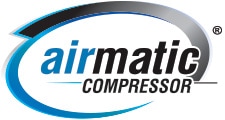Craig Verga, Director of Aftermarket Sales
With any piece of industrial equipment, it is important to understand the total costs of ownership. Another term sometimes used to describe this is the life cycle cost. It refers to the cradle to grave costs of operating the machine. This primarily falls into three categories:
1. Capital Project: This is typically described as equipment cost, freight, sales tax, installation, and commissioning. Everything that is required to get the system operational in the plant.
2. Maintenance & Repair: This is typically the routine preventative maintenance costs, repair costs, and potential overhaul costs associated with the equipment.
3. Utility Costs: This is typically the electrical energy to operate the system. There can also be other utility costs such as fuel or water depending on the type of equipment.
In the compressed air industry, the capital project usually accounts for about 8% of the equipment’s life cycle cost. Equipment maintenance and repair usually accounts for 7% of these costs. The remaining 85% of the equipment life cycle cost is typically utilities. The part that not a lot of facility managers realize however is that robust maintenance practices promote energy efficiency. So by investing a modest amount in your maintenance program you contribute to significantly reducing the life cycle cost of your equipment. Here’s an example of:
Fluid Analysis & Change Intervals
Fluid life is shortened by severe operating conditions. The most common form of this is thermal stress, which basically means operating conditions either lower or higher than designed. Here’s two examples of how thermal stress can cause severe problems in an oil injected rotary screw air compressor:
1. Due to an air compressor being oversized, the fluid does not reach regular operating temperature. As a result, the fluid cannot “burn off” the moisture ingrained in the humid inlet air. This moisture builds up in the air compressor’s fluid. The fluid is designed to perform three functions; seal, cool, and lubricate. All three functions are compromised as a result of liquid water mixed in. The result is low efficiency from poor sealing, overheating from insufficient cooling capacity, and a lack of lubrication which can lead to catastrophic failure.
A robust preventative maintenance program which includes fluid analysis will help detect either of these issues prior to seeing the effects and eventual failures. Keeping your air compressor’s fluid in good operating conditions will increase energy efficiency and component longevity, guaranteed. A preventative maintenance program can prove effective not only keeping the equipment in great shape, but it can also contribute to significantly reducing the life cycle cost of your equipment. For the best results, consult with Airmatic Compressor to understand and implement the best maintenance practices. We are here to help.
